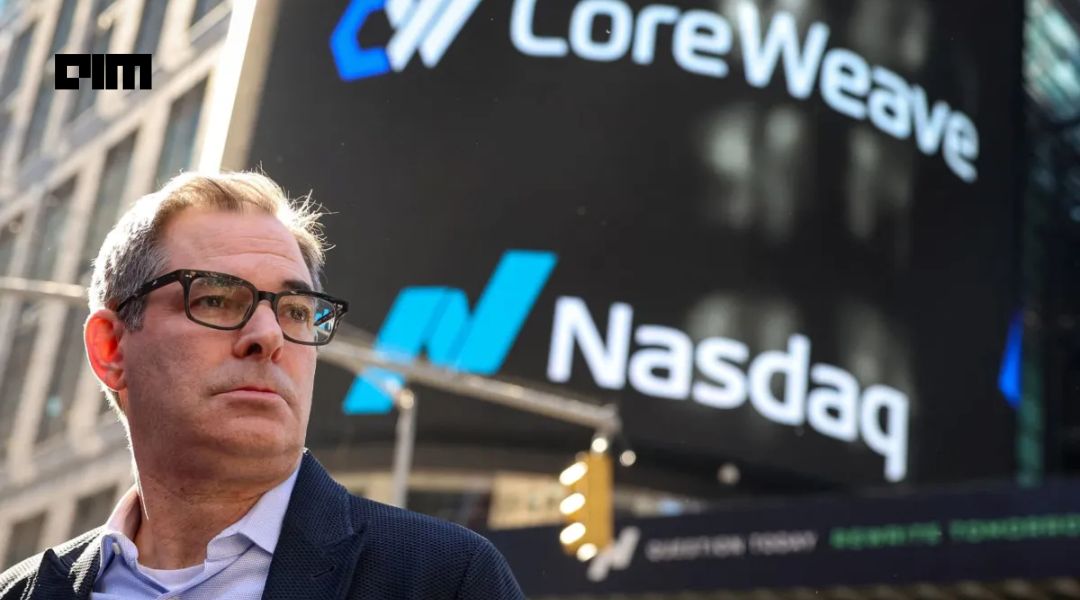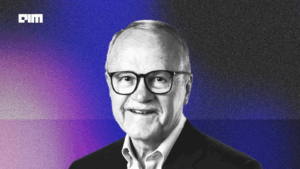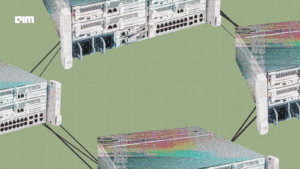By the time CoreWeave rang the Nasdaq bell in March, it had already become one of the most talked-about names in AI infrastructure. But its future still depended on someone else’s real estate.
Much of the company’s compute power ran inside data centers it didn’t own facilities operated by Core Scientific, a former crypto mining giant that had repositioned itself as a high-performance computing landlord. The arrangement worked for a while. CoreWeave got scale quickly. Core Scientific secured long-term leases. But as AI demand ballooned and infrastructure became the new battleground, the economy shifted.
Renting no longer made sense.
This week, CoreWeave announced it would acquire Core Scientific in an all-stock deal valued at $9 billion, bringing 1.3 gigawatts of gross power capacity directly under its control and wiping out roughly $10 billion in lease obligations. The move consolidates two companies with shared origins and diverging strategies, one that chose to lease, and one that now insists on owning every layer of the AI stack.
“This acquisition accelerates our strategy to deploy AI and HPC workloads at scale,” said Michael Intrator, CoreWeave’s CEO and co-founder. “Verticalizing the ownership of Core Scientific’s high-performance data center infrastructure enables CoreWeave to significantly enhance operating efficiency and de-risk our future expansion.”
A Strategic Realignment
The timing of the deal is no accident. CoreWeave’s revenue has soared over the past 18 months, rising from $229 million in 2023 to $1.9 billion in 2024, driven largely by demand from OpenAI and other generative AI workloads. In the first quarter of 2025 alone, CoreWeave brought in $981 million more than half its 2024 revenue.
But with growth came scale and with scale came costs. At the time of its IPO, CoreWeave carried $8 billion in debt and had committed to more than $15 billion in lease obligations, much of it owed to Core Scientific. Turning that overhead into equity and owned capacity wasn’t just opportunistic. It was strategic.
“We’re not paying rent, right, for the next 15 years,” Intrator said in a post-deal call with analysts. “That’s transformative.”
Under the agreement, Core Scientific shareholders will receive 0.1235 CoreWeave shares for each share held, implying a $20.40 per-share valuation. That’s a 66% premium to the company’s price before rumors of the deal surfaced. But the market response was mixed. CoreWeave’s shares fell around 3% after the announcement, while Core Scientific stock dropped nearly 18%. For some investors, especially those in Core Scientific, the deal meant trading a fast-growing data center for equity in a company with ballooning capital expenditures and high customer concentration.
A High-Valuation Playbook
The transaction also underscores how CoreWeave’s inflated stock price up nearly 300% since its March IPO has become a financial instrument in itself. Priced at $40 per share during its public offering, CoreWeave’s equity surged to over $150, driven by investor appetite for anything tied to AI infrastructure. That rally turned its shares into a powerful acquisition currency.
Just last year, CoreWeave had offered $5.75 per share to acquire Core Scientific. That offer was rejected. This time, the leverage flipped: fueled by rising revenue and market sentiment, CoreWeave came back with a fourfold higher offer, paid entirely in stock.
It’s a classic Silicon Valley tactic one used by companies like Tesla and Palantir to grow via equity rather than cash. But for CoreWeave, it’s also a hedge against rising interest rates and capital intensity.
From Crypto Mines to AI Factories
Both companies trace their roots back to the cryptocurrency era. Core Scientific was once among the largest Bitcoin mining operations in North America. CoreWeave, originally known as Atlantic Crypto, was focused on Ethereum. But when the crypto markets collapsed in 2022 and Ethereum transitioned to proof-of-stake eliminating mining rewards CoreWeave pivoted. Its founders, sitting in warehouses full of NVIDIA GPUs, began offering compute services to enterprises.
It proved to be the right bet. AI demand surged. OpenAI, Anthropic, and other startups needed compute capacity quickly, and CoreWeave could scale faster than hyperscalers like AWS or Google Cloud. By the time Microsoft’s $10 billion investment in OpenAI took shape, CoreWeave was already supplying a significant share of the compute backend—often subcontracted by Microsoft.
In 2023, Microsoft accounted for 35% of CoreWeave’s revenue. That jumped to 62% in 2024 and 72% in Q1 2025. The dependency raised eyebrows. But CoreWeave also saw a 117% year-over-year increase in revenue from non-Microsoft customers in early 2025, signaling some progress toward diversification. OpenAI itself signed a separate $4 billion compute deal with CoreWeave in early 2025 effectively bypassing Microsoft and reinforcing the company’s direct role in the AI supply chain.
Infrastructure as Leverage
The Core Scientific acquisition does not just lower lease costs. It also gives CoreWeave greater control over its power footprint, which is quickly becoming one of the most strategic assets in AI infrastructure.
A single gigawatt of capacity can power up to one million homes. For CoreWeave, that same capacity will now go toward dense GPU clusters, capable of training massive AI models. Of the 1.3 GW being acquired, around 840 megawatts are already allocated to CoreWeave workloads. The rest provides optionality: for expansion, for resale, or for reshaping previously crypto-focused sites into AI-ready facilities.
“We have gone through the conversion process,” Intrator said. “The cost associated with converting cryptocurrency sites is less than it is for setting up new AI data centers.”
Core Scientific’s facilities, once built for Bitcoin, are now being retooled for high-performance compute. In the process, they’re becoming the backbone of a new kind of digital infrastructure not speculative, but foundational.
As Nitin Agrawal, CoreWeave’s CFO, noted, the deal also unlocks access to infrastructure-focused investors and lenders, reducing the company’s cost of capital over time. “We’re turning fixed lease expenses into owned, financeable assets,” he told analysts.
The acquisition also brings in Core Scientific’s team of around 300 employees, many with experience in site operations, power procurement, and data center construction. That talent will be critical as CoreWeave scales its owned infrastructure and competes directly with hyperscalers.
The Risk Factor
For all the top-line growth, CoreWeave is still navigating the realities of building a capital-intensive business in an industry with shifting hardware cycles. While the company reported an operating loss of $27 million in Q1 2025 largely due to $184 million in stock-based IPO compensation it remains to be seen how sustainably profitable it can be at scale.
CoreWeave depreciates its GPUs over a six-year lifecycle, but NVIDIA releases a new generation of chips every two years. The 2024 B100 GPU is twice as powerful as its 2022 predecessor and includes more than double the memory. Which means CoreWeave will need to refresh hardware more often than it accounts for, a challenge that could squeeze margins if AI workloads begin favoring compute-efficient architectures.
At the same time, demand for AI compute continues to climb. Startups and enterprises alike are racing to build and deploy new models. For now, CoreWeave’s bet is that infrastructure scarcity, not oversupply, will be the defining constraint.
A Quiet Signal to Hyperscalers
Amazon and Microsoft have long blended owned data centers with leased space. CoreWeave is simply bringing that same strategy to a vertical where GPUs, power, and land are the bottlenecks.
But there’s a more subtle implication for the hyperscalers. While AWS and Azure are built for general-purpose cloud, CoreWeave has been built for AI from day one. Its willingness to take on debt, lock in chip supply, and now own physical infrastructure points to a different operating philosophy, one that prioritizes control over abstraction.
“We’re constantly looking at the space,” Intrator said, when asked about further acquisitions. “If there’s something that allows us to provide more value to our clients and drive more value to our shareholders, we’ll pursue it.”
The company is already building new data centers of its own and was the first to deploy NVIDIA’s latest GB300 NVL72 systems earlier this year. It plans to invest another $23 billion in infrastructure expansion during 2025 cycle means CoreWeave will need to refresh hardware more often than it accounts for a challenge that could squeeze margins if AI workloads begin favoring compute-efficient architectures.










